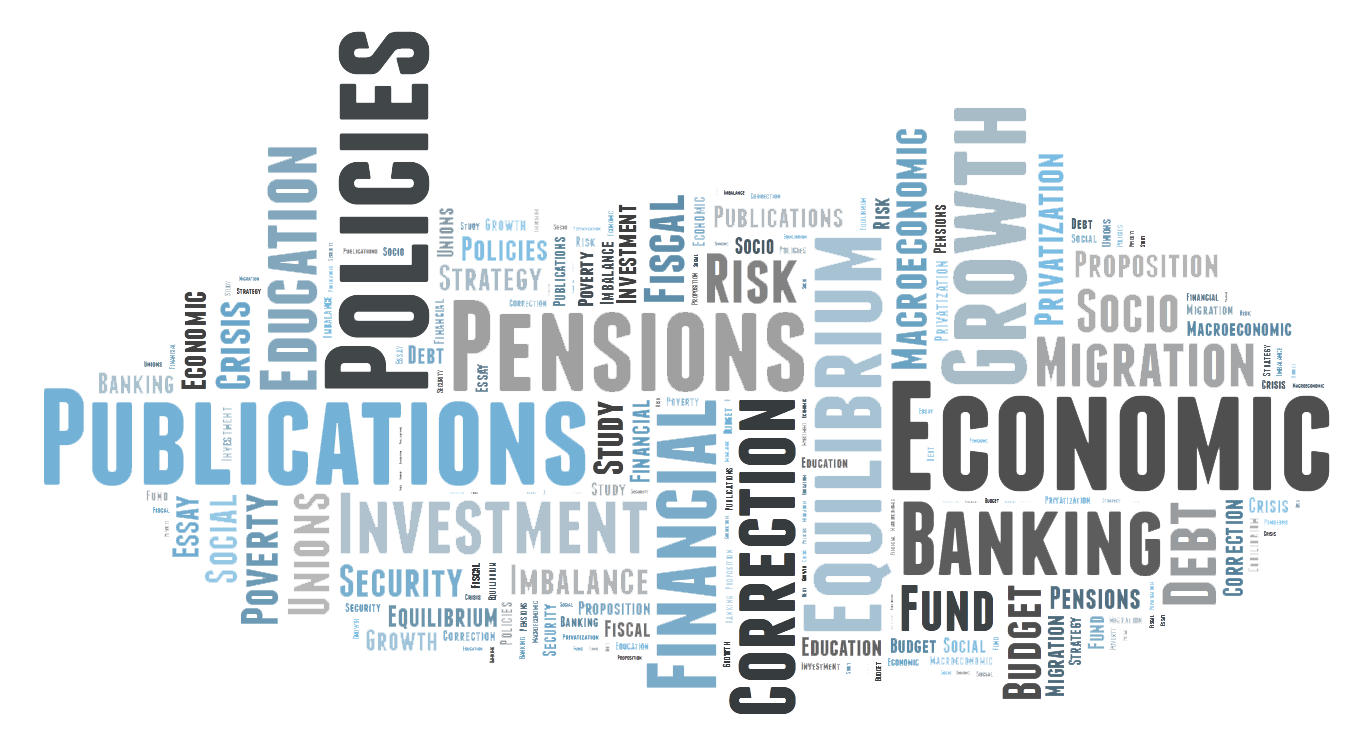Exploring Lebanon’s Growth Prospects
/in Economics & Economic Policies, EEP// Essays, Research & Propositions, Publications/by adminJean-Claude Berthelemy,Sebastien Dessus & Charbel Nahas
World Bank Policy Research Working Paper Series, number 4332
Discussion and Approval of the National Budget in Iraq
/in Economics & Economic Policies, EEP// Essays, Research & Propositions, History & Politics, HP// Essays, Research & Propositions, Publications/by adminDocument presented to the Iraqi Members of Parliament, within the UNDP “Program on Governance in the Arab Region”
The paper is destined for the Iraqi MPs and aims at illustrating the central place of fiscal choices in the economy but also, and mainly, in the consolidation of the functional legitimacy of the state, which is the central concern of Iraq today.
The study insists on the serious and simultaneous challenges that Iraq is facing (the restoration of security and the reconstruction of public facilities, the rise in oil revenues, the setting of rules for federalism and the transition towards market economy) and delineates the risks that are attached to each of them and to their joint occurrence.
It depicts a synthetic image of the effective functional role of public finance and oil revenues in the national economy and shows that, rather than acting as a complement to the economic activity, they tend to represent substitutes. Hence, the problematic of fiscal decisions is envisaged at three levels: their economic and institutional content, their interrelation and sequencing and finally the various processes of decision taking.
It concludes by confronting those theoretical elements with the great challenges that the country is facing, proposing some practical orientations and emphasizing the impact of the choices in public finance and of the processes of decision taking on the form of the state.
Syria: Fiscal Policy Perspectives
/in Economics & Economic Policies, EEP// Essays, Research & Propositions, Publications/by admin
The paper aims at analyzing the fiscal situation in Syria in order to help in the formulation of possible alternatives of fiscal policies. Beside their specific technicalities and constraints, fiscal options are approached as being a direct reflection of more general choices regarding the role of the state in managing the social and political balances in the country within its regional environment. In this perspective, Syria presents a challenging case of political economy.
After presenting the basic features of the Syrian economy, attention is devoted to understanding the rationale of the observed behaviors. The elements of choice in terms of trade-offs, management of time and available resources are then described. And finally some major options are sketched, without getting to the design of specific policies.
Migration and Education Decisions in a Dynamic General Equilibrium Framework
/in Economics & Economic Policies, EEP// Essays, Research & Propositions, Publications/by adminSebastien Dessus and Charbel Nahas
World Bank Policy Research Working Paper Series, number 4775
With growing international skilled labor mobility, education and migration decisions have become increasingly inter-related, and potentially have a large impact on the growth trajectories of source countries, through their effects on labor supply, savings, or the cost of education. The authors develop a generic dynamic general equilibrium model to analyze the education-migration nexus in a consistent framework. They use the model as a laboratory to test empirical conditions for the existence of net brain gain, that is, greater domestic accumulation of human capital (in per capita terms) with greater migration of skilled workers.
The results suggest that although some structural parameters can favor simultaneously greater human capital accumulation and greater skilled migration—such as high ratio of remittances over domestic incomes, high dependency ratios in migrant households, low dependency ratios in source countries, increasing returns to scale in the education sector, technological transfers and export market access with Diasporas, and efficient financial markets—this does not necessarily mean that greater migration encourages the constitution of greater stocks of human capital in source countries.
Land and Real estate economy in Lebanon
/in Publications, UPP// Essays, Research & Propositions, Urban & Physical Planning/by adminConference at the Cermoc
Published in : “Observatoire de Recherches sur Beyrouth et la Reconstruction, Lettre d’information” N°12, 2000
October 1998
Seminar on Urban Planning and land policies in Lebanon
/in Publications, UPP// Essays, Research & Propositions, Urban & Physical Planning/by adminHeld in June July 2000
The seminar was jointly organized by the author and by Eric Huybrechts, then director of the CERMOC (Centre d’Etudes et de Recherches sur le Moyen-Orient Contemporain), in collaboration with the Ministry of Public Works, the General Directorate of Urban Planning and the Order of Engineers.
The proceedings of the seminar present a comprehensive picture of the multiple facets of the facts and practices of urban planning and land development in Lebanon.
The seminar gathered the practitioners of planning in the administration and in the private sector, the local authorities, the sectoral administrations and a number of European experts.
It had a determining influence on the decision of the Lebanese Government to launch the studies of the “National Physical master Plan for Lebanon”, few months later.
The large urban projects and the cities
/in Publications, UPP// Essays, Research & Propositions, Urban & Physical Planning/by adminThe National Physical Master Plan and the Durable construction
/in Publications, UPP// Essays, Research & Propositions, Urban & Physical Planning/by adminConference at USEK



